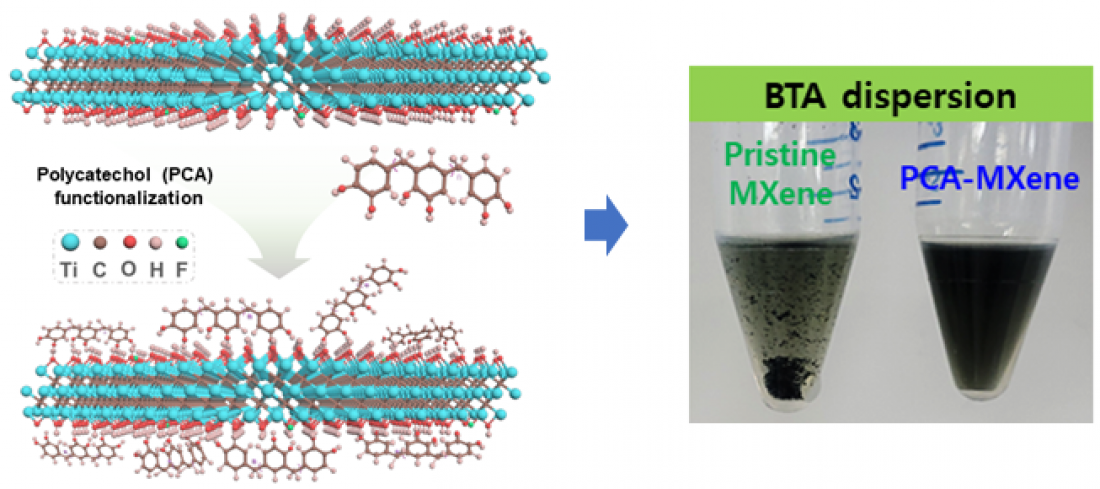□ On November 20, DGIST (President Young Kuk, Ph.D.) announced that a research team led by Professor Jong-min Choi of the Department of Energy Engineering has developed a technology that can significantly improve the efficiency of quantum dot photovoltaic cells by introducing organic solvent dispersible MXene.[1]
□ Quantum dot photovoltaic cells have made rapid developmental process over recent years. However, the performance is still limited due to energy level misalignment and surface cracks where energy levels between light-absorbing materials and hole transfer materials are not properly arranged. Notably, energy level misalignment prevents the efficient extraction of electric charges, which significantly reduces the performance of photovoltaic cells.
□ To solve this problem, Professor Choi’s research team has developed a technology for applying the MXene of a 2D structure to quantum dot photovoltaic cells. Polycatechol, with its excellent organic solvent dispersibility, was combined with the surface of a MXene structure so that it could be applied to the quantum dot ink procedures.
□ With the introduction of MXene, the quantum dot film formed a high Fermi level and the charge rearrangement of quantum dots was achieved in solving the energy level alignment mismatch problem. Moreover, a 2D-structured MXene prevents metal penetration through the device, improving power conversion efficiency from 12.8% to 13.6% and with an enhanced thermal stability of about 30%.
□ Professor Choi stated that “In this study, we have developed a way to improve the efficiency of quantum dot photovoltaic cells and have presented an idea of applying MXene to next-generation quantum dot electronic devices.” He further stated that “We intend to develop surface stabilization technology to improve the stability as well as the efficiency of quantum dot photovoltaic cells through future research.”
□ Hyung Ryul You, a joint master's and doctoral degree program student at DGIST, participated as the first author of this study, which was published online on October 6, 2023, in Advanced Energy Materials — an international academic journal of the energy field. Moreover, this study was conducted through joint research with the laboratory of Professors Insik In and Tae Kyu An of the Korea National University of Transportation, as funded by the Korea Research Foundation’s ‘Basic Research Project.’
- corresponding author e-mail address : [email protected]
[1] MXene : A two-dimensional material consisting of titanium dioxide and carbon. It is an attractive material for its diverse applicability due to its excellent electrical, thermal, and mechanical properties.



